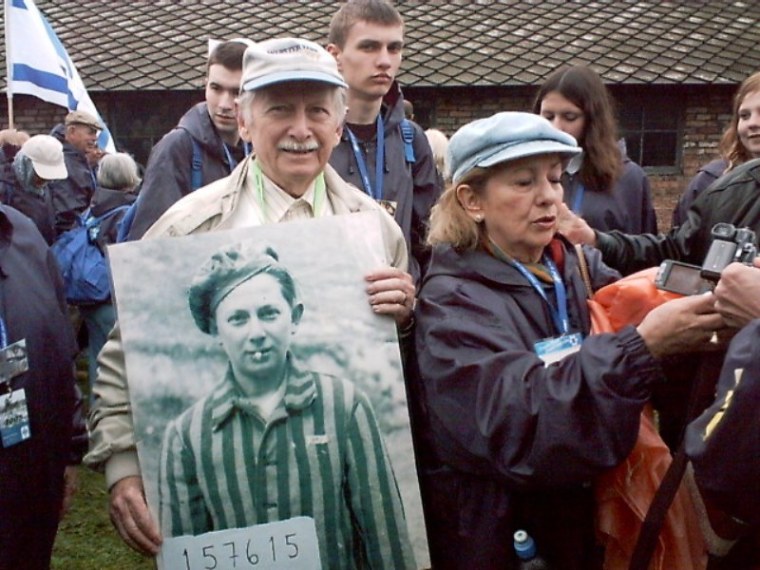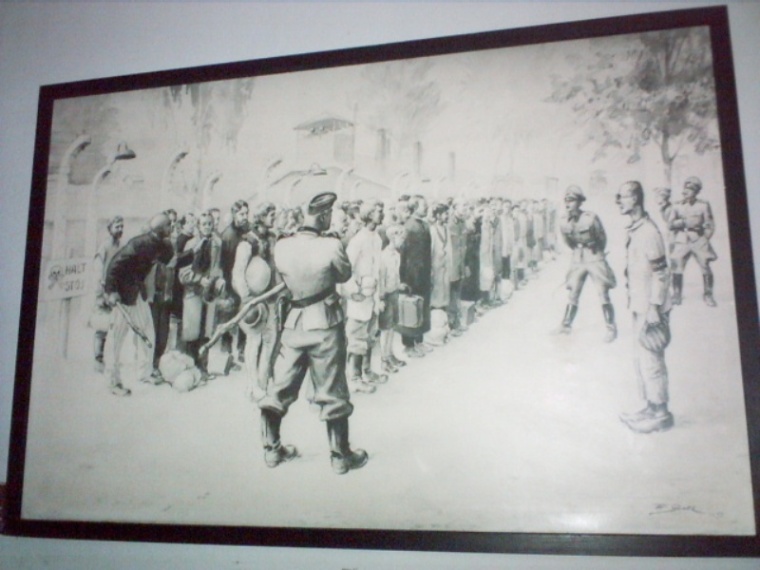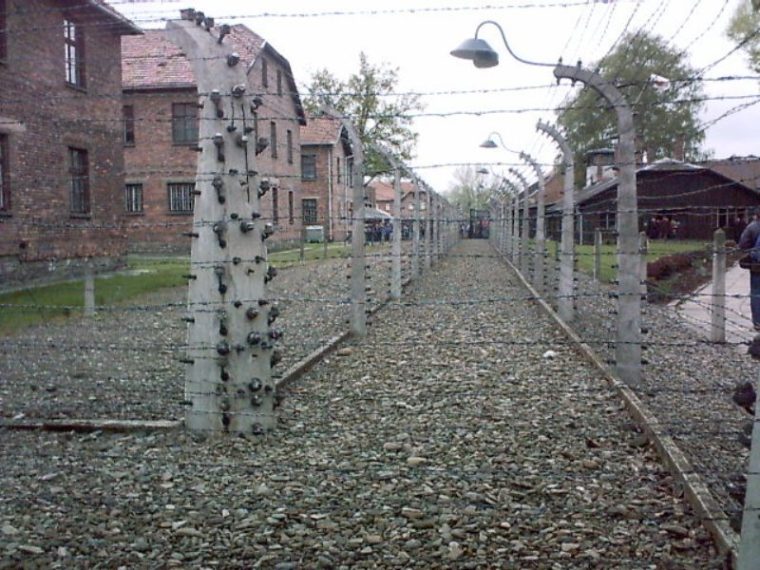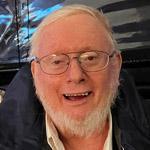
This article features a WWII event and also likens such situations of Christian persecution today. Having read the book 'Unbroken' by Laura Hillenbrand on the horrific POW experiences of US Olympic Gold Medallist Louis Zamperini by the Japanese and then saw the film, I dug out of my archives a different but similar story in the European theatre.
“Hope Was My Lifeline” is the title of the pamphlet written by Kennerly Collingwood Sheel OAM of his European theatre of war - “flying and POW experiences”.
Kennerly Collingwood Sheel handed these pamphlets out to anyone interested and this is how I came upon a copy. As a nursing home resident Kennerly Sheel met a family member and his 31 page pamphlet was handed on. This was a summary:
The starting date is 24 June 1944 with Squadron 463 on a Lancaster with the target being Prouville, a VI base, about 30 miles inland from the mouth of the Seine River. His aircraft led the squadron off at 10.30pm and all went to plan expect the Pathfinders were late dropping their flares, so they did a dummy run over the target.
On the second run they copped a direct flack hit on the port wing, the cabin filled with black smoke, the fire took hold and the bale out order was given. Kennerly had his chute on and made his way to the mid rift door. The pilot managed to pull the aircraft level after an immediate dive and this resulted in him and two others being sprawled near the mid upper-turret and he thought this was it.
He somehow managed to crawl back to the open door, got out amidst the fire the fell with the chute working 100%. He lost his boots with the sudden jerk and although there were plenty of search lights, he actually landed in a highly advanced field of wheat with a soft landing.
Parachuted near a VI site
As dawn came he found himself near a VI site and saw a rocket shoot up towards its London target. Having no shoes proved difficult, but he made his way throughout the day across various wheat fields and near ack-ack batteries which boomed out fire as Mosquito squadrons roared past. He gave himself up to one of these ack-ack crews who were surprisingly young. He was eventually taken to the French town of St Pol after what he considered some inadequate interrogation.
Here he saw two others from the crew and there they stayed for three days until moved to Lille in the local goal and placed in separate cells. Then to Brussels where he caught up with their gum aimer who'd had his arm amputated. He was to be shot as a spy by the Gestapo but refused to give any information up. Frankfurt was the next stop for four days and then to Wetzlar, a transient camp where the Red Cross were involved. Here they were offered chocolates and cigarettes, given new clothes and finally, a pair of boots.
Then to Bankau and Luft VII for the duration, a five day journey arriving on 12 July 1944. He could not help notice that three of the German guards had pronounced American accents. They did the paper work which included being photographed, given the number 328 and discovered he was one of 280 POWs. His hut housed two English, two Canadians and two Australians. The check parades happened at 8.00am and 4.30pm. Moreover the Red Cross parcels were beyond delightful.
The first three months there saw the completion of a new compound opened on 13 October. By this time there were 1000 POWs. A month later the first snow fell and with the coalmining districts of Pellnn and Blackhammer only 40 miles away, they witnessed a constant stream of day time USAF bombing attacks. Their entertainment consisted of softball, theatrical dramas, dance band, education classes, bridge but the Red Cross parcels eventually dried up. The temperature dropped to 20 below.

Jan 1945 march to Stalag Luft III
In January 1945 they were ordered to march to Stalag Luft III after a near miss bombing raid, which included him and others who were in the camp hospital (he had a poisoned leg). They walked the 7ks to Kreuzburg passing German snow troops in their ghost like uniforms. The entire town was being evacuated as artillery flashes could be seen to the east. Next day they were trucked to Lamsdorf on a road congested with refugees.
When Opelln fell to the Russians their electricity was cut off. The Camp Commandant offered to take anyone who wanted to come with him west, but everyone stayed put. But the Russians by passed their camp at Lamsdorf leaving them with a severe shortage of food and under German control and got the POWs out through Czech border. They were each given a medical check before marching off. Of the 4000, only 450 were fit to march and Kennerly who was too ill, somehow substituted himself for at least two others. The Germans decided to rail them all out.
On March 3 they left, they had one wash up on that first 24 hour period ending up in Prague. Here they bartered cigarettes for food and the train left again travelling through Pilzen, Regensburg and Augsburg. Twice they were provided with water ending up in Menningen at Stalag VIIB. The Russians of this camp were in a terrible state. It was hugely overcrowded and it was a great day when they heard that NCO's were being transferred to Stalag 383 and that the Americans had crossed the Rhine. This was a five day journey (albeit 120 miles in a straight line). By avoiding bombed rail lines they went through Munich twice.
American air craft strafed the POW train
The Americans strafed the train but they entered a tunnel just in time, and alighted at Neumarcht before it was bombed. From Parsburg they hiked 12 miles to Stalag 383. Again it was terribly overcrowded and on 19 April they were ordered to move to Regensburg. It was too risky to try to escape as a German Warewolf training camp had recruits throughout the hills just waiting to shoot an American.
After two nights they passed by a Hungarian SS Division consisting of kids 14-18 years old. As they neared the town the Americans bombed it and camped in barns and surprisingly had a Red Cross truck visit them leaving them enough food for a fortnight. The Mustang fighters were a problem as the pilots were unable to determine our column with 25 POWs killed through strafing. At the Eiser River they realised the end was near as the Americans were firing artillery from their side of the river. The Germans blew the bridge and then took off into the hills.
The Americans crossed at 5.00am and the POWs saw the platoons at 1.00pm and at 3.00pm the Yanks came up the road and they were liberated.
The homeward journey
It was eleven days later they were able to start their homeward journey. They were a long 11 days. Kennerly recalls swapping a bar of milk chocolate for 16 eggs. But with 110,000 POWS within a 50 k radius this was no easy logistical task. 100 trucks came for them. At Inglestadt aerodrome there were 1000 POW ahead of them. 70 Dakota aircraft were on POW duty.
Their group got away the following day. Landing at Reims they were taken to a transient camp and two days later boarded a Lancaster for England.
ANZAC Day brings to many returned servicemen and women a host of memories that are increasingly being given air time as the WWII veterans enter their twilight years. This should not surprise us as King David in his latter years after his many military victories had much of his life story recorded which we read today in the Old Testament's – Samuel I and II and The Chronicles I and II.
What astonished me about such stories - the forgiveness found after so many years, such horrific things done to them, and in the eyes of the world, the injustice of seeing such nasties 'get away with it' - a living contrast.
This is the same as Christians who are persecuted for believing in Jesus … forgiveness is so strong. This Guardian article features the extent of Christian persecution today.


Dr Mark Tronson - a 4 min video
Chairman – Well-Being Australia
Baptist Minister 45 years
- 1984 - Australian cricket team chaplain 17 years (Ret)
- 2001 - Life After Cricket (18 years Ret)
- 2009 - Olympic Ministry Medal – presented by Carl Lewis
- 2019 - The Gutenberg - (ARPA Christian Media premier award)
Gutenberg video - 2min 14sec
Married to Delma for 45 years with 4 children and 6 grand children